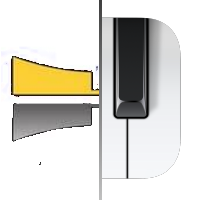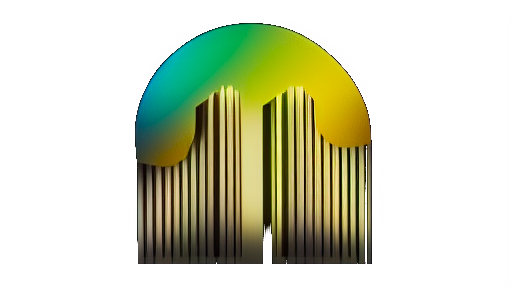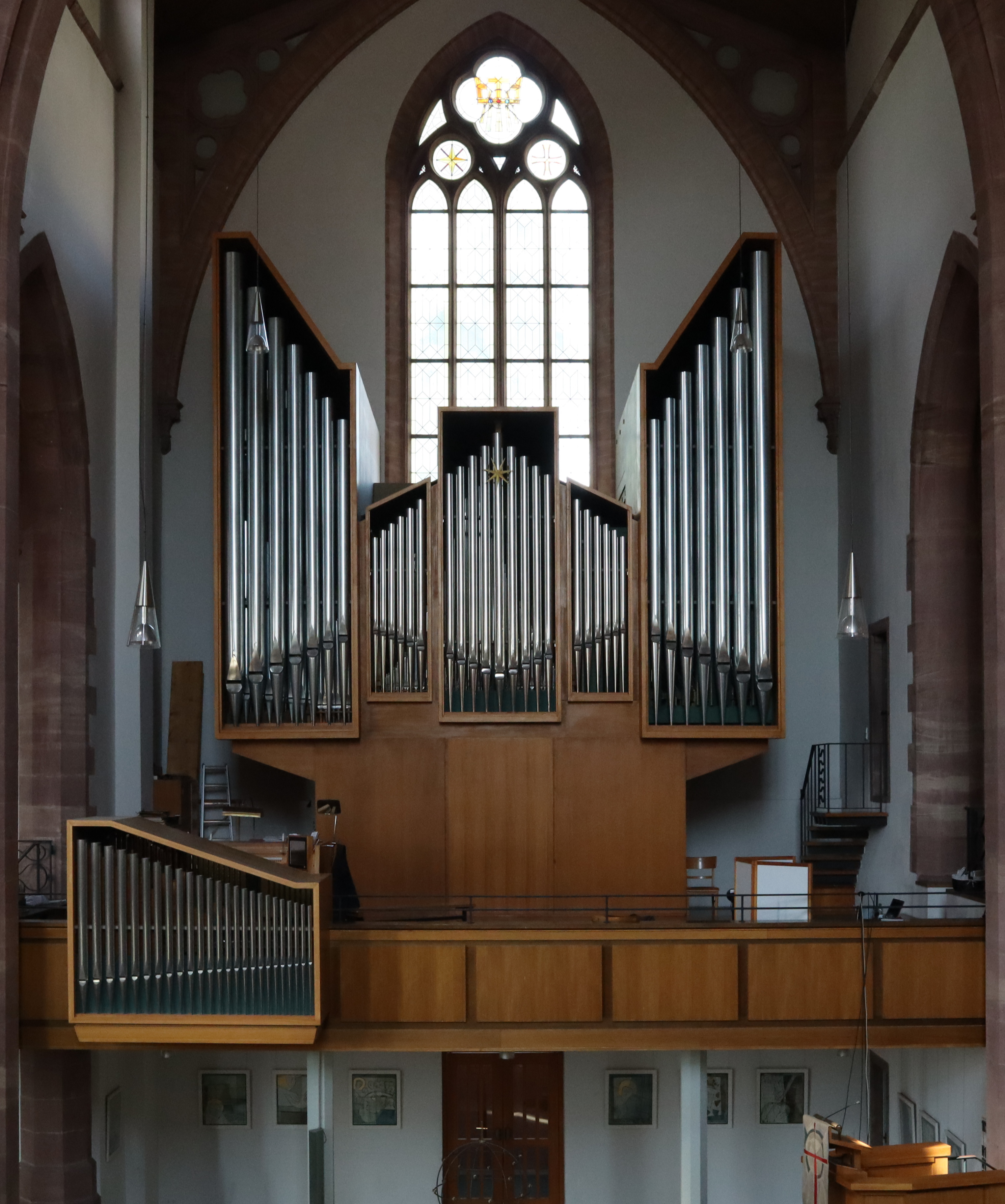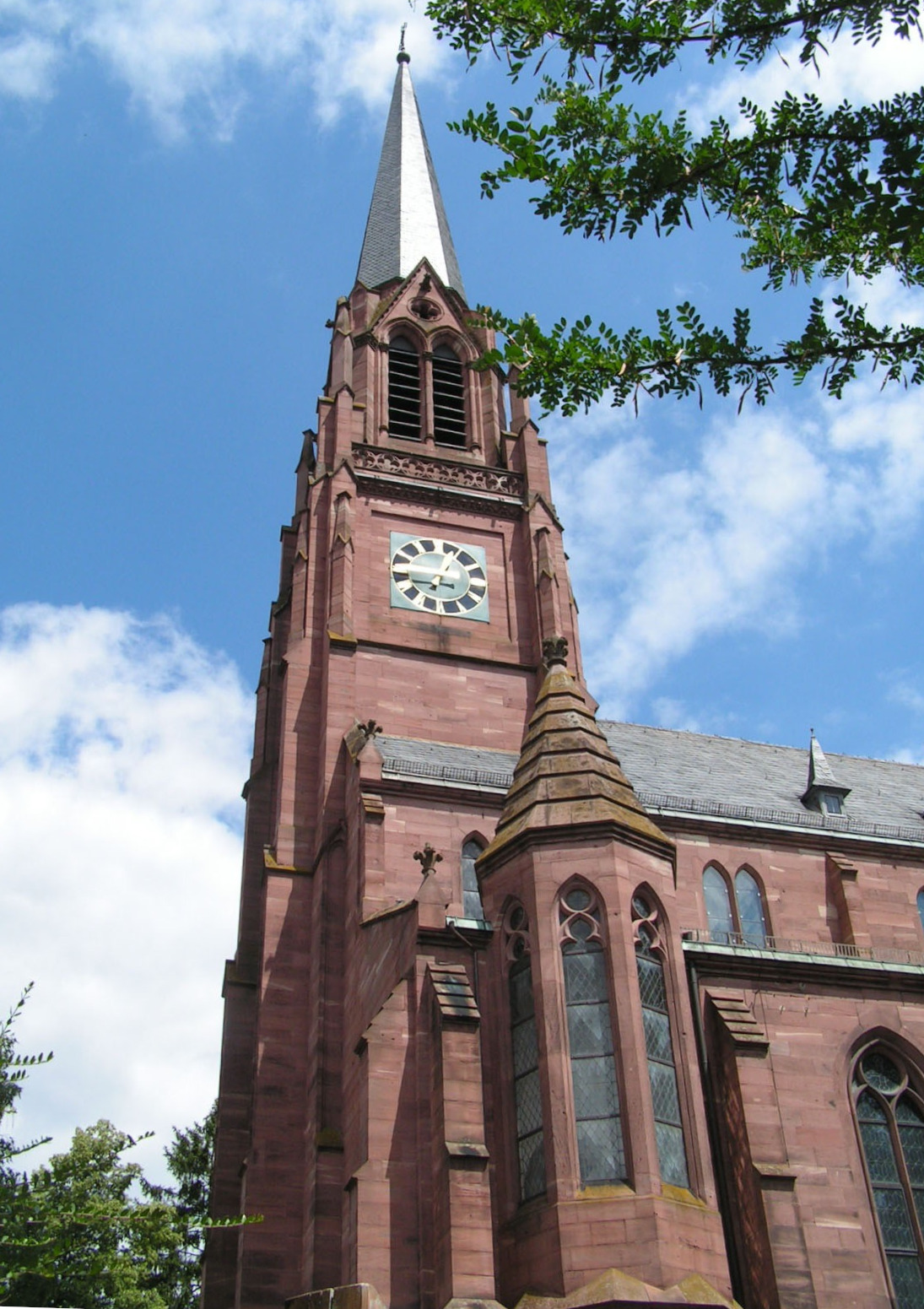Nagold, Johanneskirche
| Builder | Weigle |
|---|---|
| Year | 1971 |
| Period/Style | Neo-Baroque |
| Stops | 58 |
| Keyboards | 4+P |
| Keyaction | tracker/mechanical |
| Tuning | Equal at 440 Hz |
| Sampleset |
Available
 , sampled by
Pipeloops
, sampled by
Pipeloops
|
The church's original organ, built in 1874 by the Weigle company of Echterdingen, was a German Romantic instrument with 32 stops on two manuals, located traditionally on the rear gallery. By the early 20th century, this organ was already seen as outdated, although planned modernization was delayed for decades. It wasn’t until a major church renovation in 1971 that a new organ was commissioned—again from Weigle. With 46 stops on three manuals, 22 of which were reused from the earlier instrument, the new organ reflected the tonal ideals of the time, emphasizing clarity through aliquots and mixtures suitable for early Baroque and modern music. In contrast, Romantic repertoire was largely neglected. A smaller choir organ with eight stops was installed in 1969 and integrated as a fourth manual of the main organ.
A thorough revision of both organs was undertaken in 2011/2012 by Michael Mauch and Tilman Trefz. This included a number of technical upgrades—such as a modern digital setter system and MIDI capabilities—as well as the ability to play the Hauptwerk and pedal from the choir organ. Tonally, the revision focused on broadening the organ’s stylistic versatility, especially for French Romantic music. New string stops were added to the Hauptwerk and pedal, and in the Schwellwerk, several historical flutes and the original 1874 Viola were reintroduced, along with a Vox coelestis. Together, the choir and main organs now comprise 59 stops, offering a much richer and more flexible sound palette than before.
A thorough revision of both organs was undertaken in 2011/2012 by Michael Mauch and Tilman Trefz. This included a number of technical upgrades—such as a modern digital setter system and MIDI capabilities—as well as the ability to play the Hauptwerk and pedal from the choir organ. Tonally, the revision focused on broadening the organ’s stylistic versatility, especially for French Romantic music. New string stops were added to the Hauptwerk and pedal, and in the Schwellwerk, several historical flutes and the original 1874 Viola were reintroduced, along with a Vox coelestis. Together, the choir and main organs now comprise 59 stops, offering a much richer and more flexible sound palette than before.
| Rückpositiv | Hauptwerk | Schwellwerk | Chororgel | Pedal |
|---|---|---|---|---|
| Gedackt 8' | Bourdon 16' | Quintatön 16' | Spitzflöte 8' | Prinzipalbass 16' |
| Hohlflöte 4' | Praestant 8' | Prinzipal 8' | Holzgedeckt 8' | Subbass 16' |
| Sesquialtera 2f. | Rohrgedeckt 8' | Flöte d'amor 8' | Prinzipal 4' | Oktavbass 8' |
| Prinzipal 2' | Gambe 8' | Lieblich Gedeckt 8' | Gedecktflöte 4' | Gemsbass 8' |
| Quintflöte 1 1/3' | Großquinte 5 1/3' | Viola 8' | Schwiegel 2' | Violon 8' |
| Scharff 4f. | Oktave 4' | Vox coelestis 8' | Quinte 1 1/3' | Tenor 4' |
| Krummhorn 8' | Holzflöte 4' | Oktave 4' | Mixtur 3-4f. 1 1/3' | Choralbass 3f. 2' |
| Quinte 2 2/3' | Traversflöte 4' | Untersatz 16' | Basszink 4f. 5 1/3' | |
| Superoktave 2' | Nasat 2 2/3' | Fagott 8' | Bombarde 32' | |
| Mixtur 6f. 2' | Schweizerpfeife 2' | Posaune 16' | ||
| Hörnle 2f. 2'+1 3/5' | Terz 1 3/5' | Trompete 8' | ||
| Fagott 16' | Sifflöte 1' | Singend Kornett 2' | ||
| Trompete 8' | Mixtur 5f. 1 1/3' | |||
| Dulzian 16' | ||||
| Oboe 8' | ||||
| Trompete 8' | ||||
| Schalmei 4' |
No Video/Audio samples available.
https://www.pipeloops.com//product_info.php?cPath=23&products_id=56
 Pipe Organ Map
Pipe Organ Map

